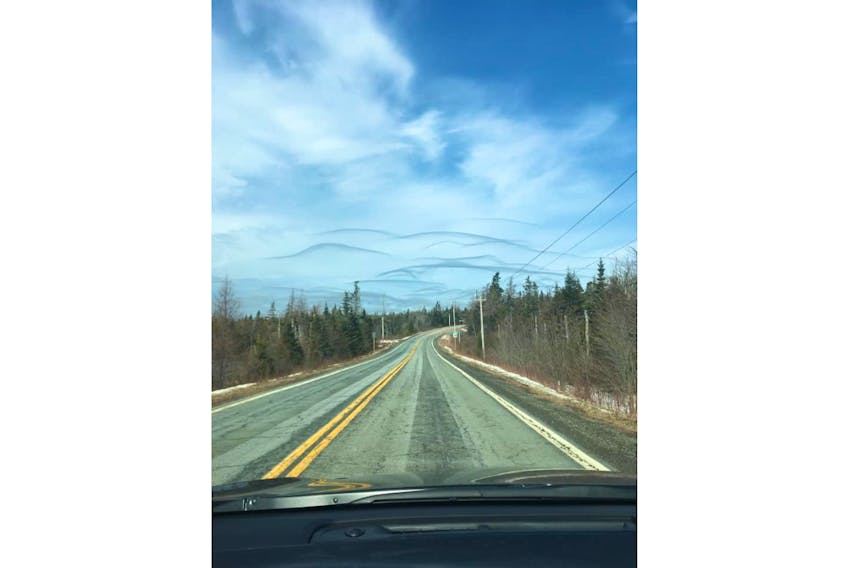The Ennis Sisters from Newfoundland sing a lovely song titled “The Fortunate Ones” (written by Maureen Ennis and Mark Murphy) (scroll down to watch a video). It’s about being able to stay home and live by the sea while so many had to travel west to work.
I’ve only lived in Atlantic Canada for 21 years, but it’s home and I’m not sure I could go for long without seeing the waves on the ocean.
Earlier this month I received a letter from Rhonda Levy. She wanted to know what caused the wave pattern in the photo she took. These were waves of a different kind – in the sky over Sherbrooke, N.S.
The waves are indeed clouds. They are called asperitas (formerly referred to as undulatus asperitas). These wave-like structures form on the underside of the cloud to makes it look like a rough sea surface when viewed from below.
- The species of this cloud is “undulatus” which means “wave” in Latin.
- The variety of the cloud is “asperatus” which means “roughened” so the name literally describes how this cloud looks.
- These are low, mid-level clouds, usually about 2,000 metres above ground.
- Asperatus clouds are formed by warm and cold air meeting; this causes a turbulent effect. Asperatus can also form when dry air meets moist air.
This example might help. If you’ve ever had the pleasure of dipping your bread in a lovely pool of balsamic vinegar, you’ll have noticed that it does not mix with the tasty dipping oil next to it; they lie there, side by side. That’s how the soft, wavy folds are created in the sky.
The day Rhonda took the picture, the Bermuda High had migrated north and was ridging off the coast; in that ridge, sat a pocket of cool, dry air. Meanwhile, a Colorado Low was pushing eastward with a warm front extending across mainland Nova Scotia: warm and moist on one side, colder and dry on the other and just the right air flow, et voilà!
Not only is Asperitas a rare sight, it is also the newest cloud type. The addition of this cloud formation to the World Meteorological Organization’s International Cloud Atlas was first proposed in 2008. For years, the case was supported by members of the public sending in photos of the dramatic cloud formations. Finally, at the WMO’s 17th Congress in 2015, the classification was accepted, making Asperitas the first new cloud type in over 50 years, since cirrus intortus in 1951.
If you happen to see something intriguing in the sky, snap a photo and send it along. I’ll do my best to clear things up with a little science.
- Want more weather information? Visit WeatherByDay.ca
- Have a weather question, photo or drawing to share with Cindy Day? Email[email protected]
Cindy Day is the chief meteorologist for SaltWire Network.
RELATED








